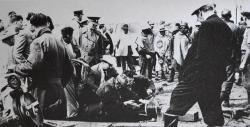
Published date
No machine capable of drilling holes large enough through which to rescue people was available anywhere in the country. Immediately after the incident, rescue teams arrived from other mines in the region and boreholes were drilled into areas where survivors were expected to be. When microphones were lowered, no signs of life were detected. After 11 days the rescue was called off. The majority of the miners at Clydesdale Colliery were Basutoland and Portuguese East Africa nationals.
The accident was believed to have been caused by the disintegration of some 900 underground pillars which cause a massive collapse. Following the disaster, the South African government established Coal Mines Research Controlling Council to improve coal mine safety and research pillar strength, supported by the Council for Scientific and Industrial Research and the Chamber of Mines Research Organization.
The South African Chamber of Mines obtained rescue equipment to reach men trapped underground in coal mines. Similar equipment was used to rescue trapped Chilean miners in 2010.
Pogrund B., (2010), The 435 SA miners who didn't make it, from Times Live, 14 October, [online], Available at www.timeslive.co.za [Accessed: 20 December 2012]|Mfusi N., (2010), ‘There was no happy ending 50 years ago’, from IOL News, 14 October, [online], Available at www.iol.co.za [Accessed: 20 December 2012]